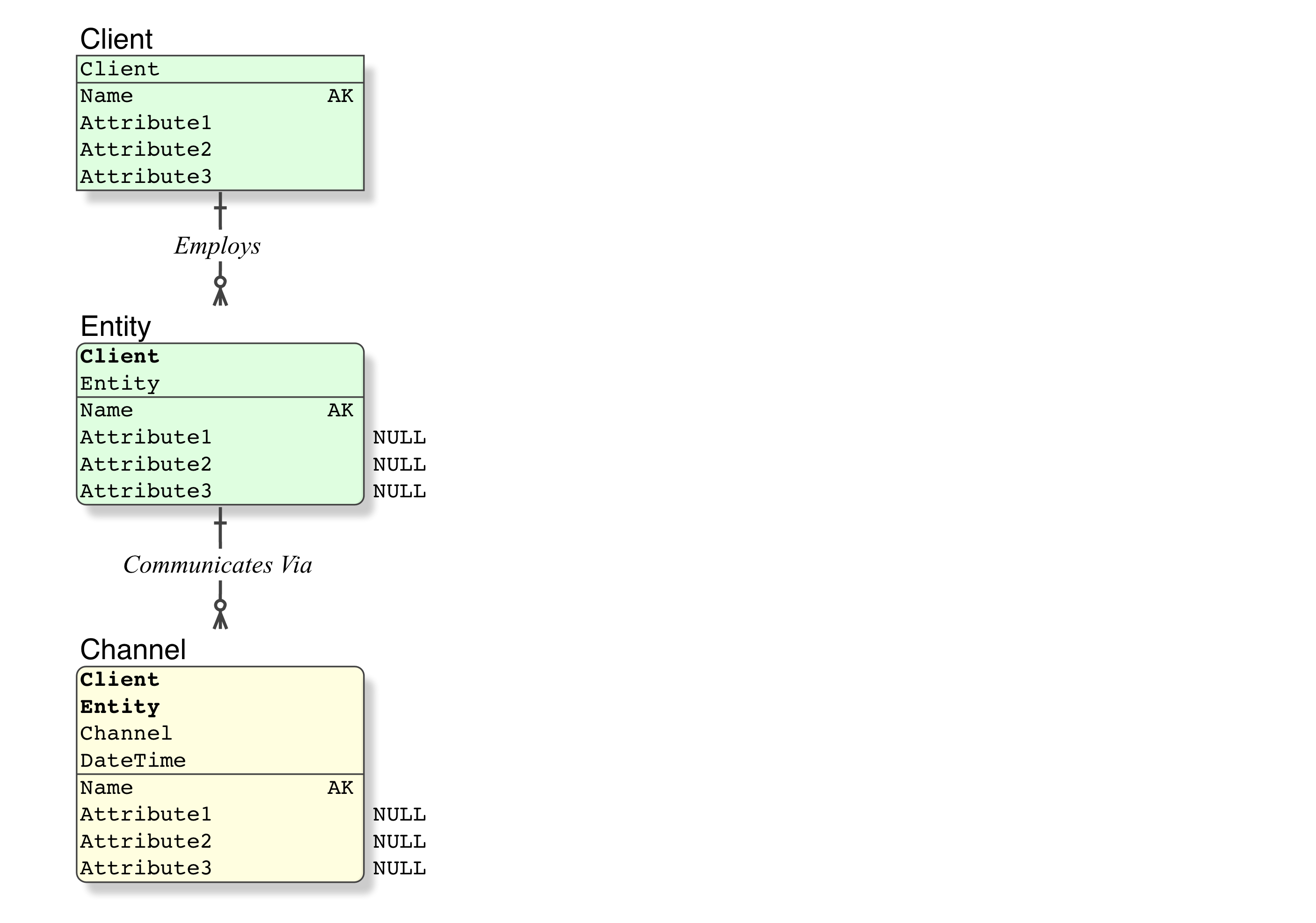
Reputation: 6512
How to choose the right storage technology and design for a tree like date structure that requires fast reads
I have a requirement to design a tree like data structure whereby child entities can inherit or override values from parent entities.
- client
- entity
-
- channel
If you could imagine three above entities with client being at level 0, entity at level 1 and channel at level 2. The entity level items can inherit or override attributes from the client level and channels can inherit or override attributes from their entity level parents.
I also need the channel to be sub-sectioned into groups where each channel can be valid from a specific dateTime. So if I make a query to get a specific channel I will pass current instance of time and I will need to get back the top first item which is less than the input datetime parameter.
Hopefully the tree's depth will be set at 3 and there won't be any extensions. My question is what would be the best approach for designing this data structure.
Should I have 3 tables for each type and have a view that is designed to allow for fast access to the data, or should I have a single table and use one of the three tree design methodologies described in this article?
What would be the upside and downside of each approach?
Upvotes: 0
Views: 153
Answers (1)
Reputation: 33708
Noting the Relational database tag
The Relational Model handles hierarchies beautifully. There is no need to do strange things, such as in the blog post: it is anti-Relational. The hierarchy is implemented plainly, and all queries are simple. Use SQL, the data sub-language for the RM, to obtain whatever "picture" or "view" you need of the data.
If you want Relational, definitely three tables: one table would be horrendous because it is not Normalised.
The Primary Keys I am giving you (
Client,Entity,Channel) are short names or codes that the user has for Identifying their data. In the second and third tables, they are composites. Such Keys are very fast.- ie. it is not a surrogate, such as a
Record ID, ID, id. A surrogate is always an additional column and an additional index, which would make the tables distinctly slower. Not to mention, the code required will be buggy and confusing.
- ie. it is not a surrogate, such as a
This is adequate for the level of your question, the SQL code required to navigate the structure is simple.
To cater for the "inheritance or override" of the attributes, I can provide a more Normalised design, which will have no NULL columns, however it will require slightly more complex SQL code, which can be eased with the use of a View. Please ask.
Relational Data Model

Note • Notation
All my data models are rendered in IDEF1X, the Standard for modelling Relational databases since 1993
My IDEF1X Introduction is essential reading for beginners.
Enjoy.
Upvotes: 1
Related Questions
- Fast Relational method of storing tree data (for instance threaded comments on articles)
- The best way to store the following temporal data in DB
- best data structure suitable for event-calender application
- Data structure to use, for large data sets from file
- the best way to store dates for a huge data
- Best Data Structure/Algorithm for insert/delete/rank/select queries
- Binary Tree applications - Storing dates
- Best Data Structure to Store Large Amounts of Data with Dynamic and Non-unique Keys?
- How do I determine which kind of tree data structure to choose?
- What is the most efficient way to store and query trees?